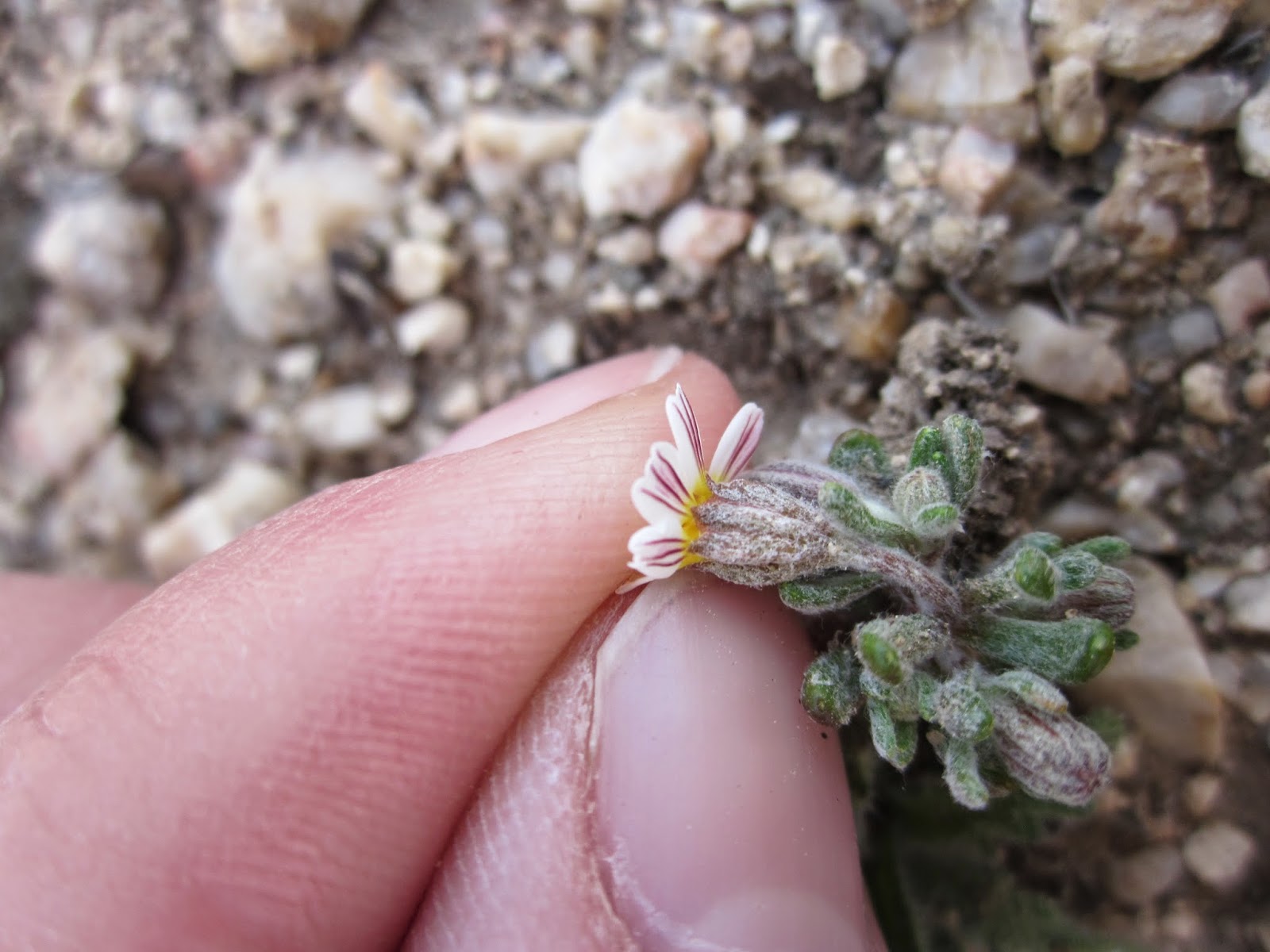Coyote Flat is on the northern end of the SBNF and is starting to burst with wildflowers. The habitat is high desert with areas of big sagebrush (Artemisia tridentata) and pinyon pine (Pinus monophylla) and Joshua tree forest (Yucca brevifolia).
 |
| This is Anisocoma acaulis. |
 |
| Check out it's cool leaves and "bud scales" aka phyllaries. |
 |
| It looks like a painting! |
 |
| This is Castilleja plagiotoma and it is a Forest Service sensitive species and it is a hemiparasite on big sagebrush (Artemisia tridentata). |
 |
| You can see the fussy yellow flowers sticking their heads out from behind the green bracts. |
 |
| This is the tiny snakeweed (Chamaesyce sp.) that is mat-forming on the ground. |
 |
| Ephedra viridis |
 |
| Some of the amazing granite outcroppings. |
 |
| Layia glandulosa |
 |
| Phacelia curvipes |
 |
| Phlox austromontanum |
 |
| The teeny Forest Service watch list species Syntrichopappus lemmonii that I have been surveying for recently. |
 |
| It can be recognized by the crimson stripes on the back of the petals (ray flowers). |
 |
| Viola sp. |
 |
| Astragalus douglasii var. parishi |
 |
| Astragalus douglasii var. parishi |
 |
| The puffy fruits of Astragalus douglasii var. parishi. |
 |
| An adorable Cryptantha species that is everywhere. |
 |
| One of the last things you expect to see in the high desert is a puffball mushroom. |
 |
| This rock had eroded in an interesting way and eroded parts were filled in with this black lichen. |
 |
| A cute little lupine (Lupinus sp.). |
 |
| I have been seeing all kinds of interesting reptiles. This lizard was trying really hard to get away from me. |
 |
| The view down into the desert from the mountains. |
 |
| A horny toad! I thought it was dead, but of course it was being super still so it could catch the ants that were crawling on it to eat! |
 |
| The first flowering Yucca whipplei I have seen. |
 |
| Another really nice Lupinus. |
 |
| Mentzelia sp. |
 |
| Phacelia fremontii |
These last three photos were taken of plants that are endemic to the San Bernardino mountains and can only be found on or near pebble plains. Pebble plains are areas that shrubs and trees cannot grow on due to the high amount of clay in the soil. The pebble plains also have lots of quartzite cobbles in the soil.
 |
| This is the Forest Service sensitive plant Boechera parishi. |
 |
| This is the Forest Service sensitive Dudleya abrahamsii var. afinis that is found in rocky outcrops on the pebble plains. |
 |
| Lomatium parryi |




No hay comentarios:
Publicar un comentario